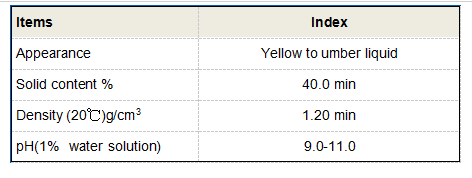Sodium Salt of Polyaspartic Acid for Enhanced Performance in Various Applications
Polyaspartic Acid Sodium Salt A Versatile Biopolymer for Modern Applications
Polyaspartic acid sodium salt is an intriguing biopolymer that has garnered significant attention in various fields, including pharmaceuticals, agriculture, and materials science. A derivative of aspartic acid, which is one of the 20 standard amino acids, polyaspartic acid has unique properties that make it highly suitable for various applications.
Chemical Structure and Properties
Polyaspartic acid (PASP) is a naturally occurring biopolymer with a molecular structure characterized by repeating units of aspartic acid. When synthesized, it often takes the form of its sodium salt, which enhances its solubility in water and makes it easier to handle. The sodium salt form retains the fundamental characteristics of the polyaspartic acid while providing enhanced stability and functionality.
The unique chemical structure of PASP contributes to its extraordinary properties. It is biodegradable, non-toxic, and biocompatible, making it an ideal candidate for environmentally friendly formulations. In addition, it possesses excellent water retention capabilities and forms gels, which are highly sought after in various industrial applications.
Applications in Agriculture
One of the most promising applications of polyaspartic acid sodium salt is in the field of agriculture. The water retention properties of PASP allow it to be used in soil conditioning, where it can improve soil structure and enhance water availability to plants. This is particularly beneficial in arid and semi-arid regions, where water scarcity is a major concern for agricultural production.
Moreover, PASP can act as a biodegradable chelating agent, binding essential nutrients such as calcium, magnesium, and iron. This chelation process improves nutrient availability to crops, promoting healthier growth and higher yields. As the global population continues to rise, and the demand for sustainable agricultural practices increases, the use of polyaspartic acid sodium salt paves the way for innovative farming solutions.
polyaspartic acid sodium salt

Role in Pharmaceuticals
In the pharmaceutical industry, polyaspartic acid sodium salt is gaining traction due to its biocompatibility and potential as a drug delivery system
. Researchers are exploring its ability to encapsulate drugs and release them in a controlled manner, thereby enhancing the efficacy of treatments while minimizing side effects. PASP-based formulations can be utilized for various drugs, including anti-cancer agents and anti-inflammatory medications.Additionally, PASP has shown promise in tissue engineering and regenerative medicine. Its biodegradable nature allows it to be integrated into scaffolds for cell growth and tissue regeneration. Given the increasing interest in personalized medicine, the versatility of polyaspartic acid sodium salt makes it a valuable resource for developing advanced therapeutic strategies.
Innovations in Material Science
In material science, polyaspartic acid sodium salt is being investigated as a component in the development of eco-friendly coatings and adhesives. The ability to create biobased polymers that retain high performance while being environmentally sustainable is a significant advancement. These coatings can be used in a variety of applications, including construction, automotive, and consumer products, to provide durability and protection without the harmful effects associated with traditional synthetic materials.
Furthermore, PASP can serve as a stabilizer in the formulation of nanoparticles, which are essential for applications in electronics, cosmetics, and drug delivery. The incorporation of polyaspartic acid sodium salt in these systems can enhance stability, dispersity, and performance, making it a versatile additive in nanotechnology.
Conclusion
In summary, polyaspartic acid sodium salt represents a multifunctional biopolymer with immense potential across various domains. Its environmental sustainability, biocompatibility, and functional properties position it as a critical component for advancements in agriculture, pharmaceuticals, and material science. As research continues and new applications are explored, PASP is likely to play an increasingly vital role in addressing some of the pressing challenges faced by modern society, ranging from sustainable farming to innovative healthcare solutions. The future looks promising for this remarkable biopolymer, potentially ushering in innovations that benefit both the environment and humanity.
-
Water Treatment with Flocculant Water TreatmentNewsJun.12,2025
-
Polymaleic AnhydrideNewsJun.12,2025
-
Polyaspartic AcidNewsJun.12,2025
-
Enhance Industrial Processes with IsothiazolinonesNewsJun.12,2025
-
Enhance Industrial Processes with PBTCA SolutionsNewsJun.12,2025
-
Dodecyldimethylbenzylammonium Chloride SolutionsNewsJun.12,2025





